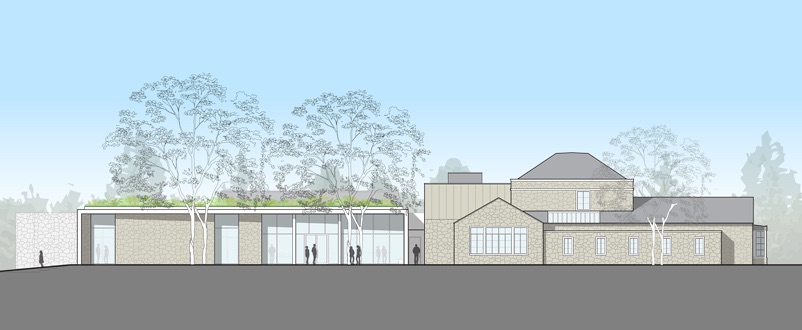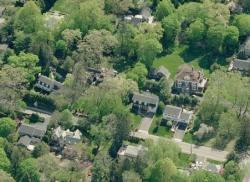You Can't Make This Stuff Up: Bob Berg Responds to Dorothy Finger
- Details
- Written by: Joanne Wallenstein
- Hits: 9060
 This letter was sent to Scarsdale10583 by Robert Berg: I read Dorothy Finger's letter of resignation from the Board of Assessment Review with complete and utter astonishment! It became instantly clear to me that Mayor Mark and Village Attorney Esannason have caused Ms. Finger tremendous personal angst and created major problems for the Board of Assessment Review in carrying out our Herculean task this year. Ms. Finger's ad hominem attacks on me in her letter seem based on her misapprehension that I, along with Bob Harrison, pressured the Mayor and the Village Attorney to cause Ms. Finger to recuse herself from this year's hearings.
This letter was sent to Scarsdale10583 by Robert Berg: I read Dorothy Finger's letter of resignation from the Board of Assessment Review with complete and utter astonishment! It became instantly clear to me that Mayor Mark and Village Attorney Esannason have caused Ms. Finger tremendous personal angst and created major problems for the Board of Assessment Review in carrying out our Herculean task this year. Ms. Finger's ad hominem attacks on me in her letter seem based on her misapprehension that I, along with Bob Harrison, pressured the Mayor and the Village Attorney to cause Ms. Finger to recuse herself from this year's hearings.
Speaking for myself, I never thought for a moment that Ms. Finger should have recused herself from the BAR this year. I never asked the Mayor, the Village Attorney, the Village Assessor, the Village Manager, or anyone else to have Ms. Finger recuse herself. I'm sure Bob Harrison did not either. Nor did any member of the Board of Assessment Review. We had no reason to do so since Ms. Finger had ably served on the BAR last summer, and we welcomed her continued participation.
Ms. Finger's letter reveals that Mayor Mark and Village Attorney Esannason asked her to recuse herself from this year's proceedings. Ms. Finger erroneously attributes their request to pressure from me and Bob Harrison.
I am truly appalled how the Mayor and the Village Attorney are mishandling every aspect of this Ryan revaluation disaster. It's really amateur hour over at Village Hall.
So what am I talking about? On Grievance Day, June 21,2016, Scarsdale property owners had filed approximately 1050 grievances challenging their tentative assessments arising from the 2016 Ryan revaluation. That day, the Board of Assessment Review convened to begin its public hearing. Nearly two hundred property owners had scheduled themselves to appear personally before the BAR -- an unprecedented number which necessitated three days of hearings.
At the start of the June 21 hearing, Dorothy Finger appeared and announced that she was recusing herself from this year's deliberations without explaining why. I asked her why, and she fleetingly stated something like "because of this year's troubles." She then disappeared.
We later learned from Village Attorney Esannason that Ms. Finger intended to remain as a member of the BAR notwithstanding her recusal from all 1050 grievances. We asked him why and he said nothing.
Given the enormous volume of work the BAR faced this year and the need for a 3 person quorum to conduct our business, speaking for myself, I felt that Ms. Finger could not simply recuse herself from this year's grievances, but needed to resign immediately, and a replacement had to be found as soon as possible. I explained this to the Mayor and the Village Attorney.
The urgent need for a fifth active member of the BAR became clear when we tried to schedule the third day of public hearings. Over 40 property owners had signed up for a scheduled hearing of the BAR on the evening of June 29. That hearing had to be cancelled at the last moment because a quorum of BAR members could not be assembled. Instead, the hearing had to be rescheduled for the morning of July 1 -- the day before the long holiday weekend.
I implored the Village Attorney, the Village Manager, the Mayor, and the Trustees over the next month at Village Board meetings and in letters to convince Ms. Finger to resign and to install a replacement member of the BAR. After weeks of delay -- and another cancelled BAR meeting for lack of a quorum, Ms. Finger agreed to resign, and resident Jane Curley graciously volunteered to serve in her stead and was appointed by the Board of Trustees. Ms. Curley received her mandatory training and began serving on August 1.
At this point, the BAR has determined about 1/2 of the 1050 grievances. Because of upcoming planned vacations, Ms. Curley's participation will be vital to maintaining a quorum and thereby ensuring that the BAR completes its onerous job so that the final assessment roll is timely filed on September 15.
So why do I think the Mayor and Village Attorney have acted egregiously? Well, THEY NEVER TOLD MS. FINGER, THE MEMBERS OF THE BAR, OR THE PUBLIC THAT THEY (AND THEY ALONE) WERE THE ONES WHO WANTED MS. FINGER TO RECUSE HERSELF THIS YEAR. Ms. Finger understandably, but incorrectly, thought they were responding to outside pressure – and believed the pressure came from me and Bob Harrison.
As is apparent from her letter of resignation, Ms. Finger is very hurt at the criticism she has received for having to recuse herself when she was ready, willing, and able to serve, and then having to resign from the BAR. What's disgraceful to everyone involved is the Mayor's and Village Attorney's failure to set the record straight from the outset – that they, for whatever undisclosed reasons, wanted Ms. Finger to recuse herself from this year's proceedings but stay on the BAR.
Only they know what they were thinking – if indeed they were thinking – when they made that unwarranted request. But they have a hell of a nerve to leave Ms. Finger out there blowing in the wind as public pressure mounted to have a full working BAR.
I understand that Ms. Finger suggests in her letter of resignation from the BAR that I too resign from the BAR because of my purportedly "unprofessional conduct." I have a thick skin, and now understanding the misapprehension under which she was operating, I don't take personal offense. But since her suggestion is now out in the public domain, it warrants a response from me.
I have served as a member of this BAR for many years, and I have served the community well. Before I joined the BAR, previous BARs generally rubber-stamped whatever recommendations the Village Assessor made with respect to any particular grievance. The net result was that virtually all grievances submitted to the BAR were denied unless there was proof of a recent sale of the property at issue. Since I joined the BAR, the BAR has carried out its duties fully as an "independent" town board, as mandated by law, and we often come out with decisions that the Village Assessor disagrees with because we exercise our independent judgment and try to do justice where we can when warranted.
I can't speculate as to what conduct of mine Ms. Finger believes to be "unprofessional." She seems to believe that because I strongly feel that the Ryan revaluation is the train wreck I predicted, I am somehow biased. That is not the case at all. I approach every grievance with an open mind and review whatever evidence the grievant presents in support of her case. So do all the members of the BAR. Ms. Finger correctly points out that by law, the valuation a property receives on June 1 is the presumptively legal valuation. Indeed, it is, and I pointed that out many many times to grievants that came before the BAR on our public hearing days. That's why we on the BAR implored grievants to provide us with evidence substantiating their claims, including independent appraisals of their properties, so that their grievance could be properly evaluated and the presumption of the legality of the tentative valuation could be overcome, if warranted.
The Mayor and the Village Attorney really owe a sincere apology to Ms. Finger, to the BAR members, and to the residents for exacerbating an already charged situation over the Ryan revaluation and by needlessly cajoling Ms. Finger, a willing and qualified volunteer, to recuse herself from this year's proceedings. The Mayor and the Village Attorney lacked the guts to explain to anyone, and most importantly, to Ms. Finger that they (and they alone) were the ones who wanted her to recuse herself. And when the proverbial excrement hit the fan as the BAR was stymied in doing its job, they maintained their silence. You can't make this stuff up! I'm sorry, Dorothy, that this happened, and we on the BAR were clueless.
The 2016 Reval: We're All in this Together
- Details
- Written by: Joanne Wallenstein
- Hits: 7889
 This an opinion piece from site owner Joanne Wallenstein:
This an opinion piece from site owner Joanne Wallenstein:
There's not much to be said about the 2016 revaluation that hasn't been said already –not once, but over and over and over again. And not just said .... but even screamed.
So I'll take this opportunity to say what hasn't been said and what badly needs to be conveyed.
Those who are unhappy with their assessments, about 19% of homeowners, seem to be looking for someone to blame. They are pointing fingers at the Village Assessor, the Village Attorney and the man who conducted the second revaluation, John F. Ryan. They are singling out the trustees and deriding the Mayor, even insinuating that the individuals on the Board of Trustees stood to gain from their revised assessments.
As Mayor Mark noted, many leading this angry charge have rarely come to Village Hall and few participate in Scarsdale's democratic, non-partisan system. Yet, now, believing they have been unjustly treated, they are storming village meetings and writing copious complaints. They seek to humiliate both village staffers and their neighbors and peers who have volunteered to serve the community. They speak out of turn, yell out from their seats, fail to respect time limits and lack respect for some of Scarsdale's finest, most intelligent public servants.
From where I sit, I see that our Mayor, who has lived in Scarsdale for most of his life and loves this town with all his heart, is being belittled and demeaned. The entire Board of Trustees, who have listened patiently and thoughtfully to residents' complaints, often appear surprised and taken aback by the tone of their constituency.
It is difficult to sit in the audience and watch this ugly campaign. No matter how unhappy you might be about the valuation of your property this time around, the Mayor and the trustees are our neighbors, our friends, and people who volunteer because they love our community.
I can't help but think back to June 2014 when after the first revaluation, a different group came to Village Hall to object to their new assessments. They were angry as well – but often opened their comments by thanking the Board for serving before bringing forth their complaints in a respectful fashion. These folks were persistent as well, and ultimately, the Board voted to conduct a second revaluation to address these perceived inequities. It had been 45 years since a reval had been done; changing the values of all properties in the village was bound to be traumatizing for a number of people, and in retrospect it doesn't seem shocking that it might take more than one attempt to get the job done as fairly as possible.
Sometimes things go wrong. Sometimes there are unanticipated consequences of well-intentioned actions. This seems one of those times. Village Board members have expressed tremendous unhappiness with the outcome of the second reval. They are not failing to listen, or oblivious to the issues being raised (again and again) about the second reval. They have explored the available avenues for ameliorating residents' concerns. Short of another reval, authorized by the next board, or two boards from now, there is nothing that can be done on a village-wide level. This is as frustrating to the Mayor and trustees as it is to anyone who has been complaining.
So before you come to Village Hall and excoriate the leadership, or threaten a lawsuit because you want the people in charge to do something that they can't actually do, think about whom you are attacking. Your so-called enemies are really no different from yourselves, concerned educated, passionate residents who love Scarsdale as much as you do ... and the Village would need to use your own tax dollars to defend the suit!
It's time to stop hating them and shaming them for working on the community's behalf. If you care about Village government, become a part of the solution, and become instrumental in working through the problems from the inside.
New Program at the JCC Promises Better Balance for Seniors
- Details
- Written by: Joanne Wallenstein
- Hits: 4349
 For seniors, the biggest challenge to maintaining an independent lifestyle is falling. In fact, falls are the fifth leading cause of death for adults aged 65 years and older. "One out of three older people falls each year. According to the Center for Disease Control and Prevention "Falling once doubles your chances of falling again."
For seniors, the biggest challenge to maintaining an independent lifestyle is falling. In fact, falls are the fifth leading cause of death for adults aged 65 years and older. "One out of three older people falls each year. According to the Center for Disease Control and Prevention "Falling once doubles your chances of falling again."
Now, a unique new movement program focuses exclusively on this all-important issue. "Balance 'n Mobility" is the brainchild of Deirdre Pachon, who has been teaching exercise to seniors for over 30 years while continuously refining her skills and following the latest research. A certified personal trainer and group fitness instructor, Deirdre recognized that most senior fitness classes do not devote enough time, attention, and expertise to developing the skills that help prevent falls. Her program is already producing positive effects among her clients, as long as they follow her last crucial instruction: practice, practice, and practice some more!
Contrary to popular opinion, research shows that conventional walking is not the best way to protect against a fall. Instead, try what Deirdre calls "Pattern-Walking"--sequences of multi-directional step patterns that increase in complexity and repetition. For example, you may step wide then narrow across front and back while consistently traveling in a forward direction. These movement patterns are performed on a long mat roughly 4 feet wide by 20 feet long with a grid taped on top. When a new pattern is introduced numbers are placed on the mat. Once the pattern is memorized, the numbers are gradually taken away.
The classroom is set up using a circuit format so other more common balance exercises can be included, such as practicing heel-to-toe walking, single leg stand, and walking around or over obstacles. Members move from station to station, individually, paired, or in small groups, while repeating 2-3 sets of each balance exercise. With enough practice, confidence improves along with functional ability, mental agility, and lower body strength. Participants often report back to Deirdre and to each other which strategy they used to prevent a misstep. This process encourages social interaction and is mentally and physically engaging. The class is 75 minutes long and includes musical accompaniment. The programs are designed to slow down the aging process as it relates to balance and mobility. If you would like to see "Balance N Mobility" in action, you are welcome to observe at JCC of Mid-Westchester in Scarsdale NY. www.jccmw.org or contact Deirdre at [email protected] or by phone 914 260-3165.
Donations Now Being Accepted for the Friends of the Library Book Sale
- Details
- Written by: Joanne Wallenstein
- Hits: 4015
 Are you looking to find a new home for your unwanted books? It's time to donate lightly used books for The Friends of the Scarsdale Library annual blockbuster sale, which kicks off Friday, September 9, 2016 with a Members Preview Night*. Volunteers are also welcome to help sort books and organize materials throughout the summer and during the sale.
Are you looking to find a new home for your unwanted books? It's time to donate lightly used books for The Friends of the Scarsdale Library annual blockbuster sale, which kicks off Friday, September 9, 2016 with a Members Preview Night*. Volunteers are also welcome to help sort books and organize materials throughout the summer and during the sale.
Donations will be accepted through Friday, August 26, and should be left inside the gray door to the side of the Scarsdale Library entrance, 54 Olmsted Road, at Post Road/Route22, Scarsdale, NY.
Books should be in saleable condition. Damaged, moldy or dog-chewed books cannot be accepted; nor can textbooks, encyclopedias, magazines or VCR tapes.
The Book Sale offers more than 60,000 almost-new and out-of-print books, including bestsellers, classics, biographies, fiction, parenting, cooking, art, graphic novels, humor, travel, self-help, drama, religion, philosophy, poetry, history, political science, and business.
There is also a huge selection of children's books, plus DVDs, CDs, LPs, audiobooks and sheet music; and a trove of autographed copies.
Westchester County's premier book sale will begin with a Members' Preview on Friday, September 9, from 6-9 pm. *New members may join at the door that evening for $25. The sale will run through Sunday, September 18. New books are added to the sale daily. The full schedule will appear soon on the Annual Book Sale webpage at www.scarsdalelibrary.org.
For information about volunteering or more information about donations, please contact Kathy Steves, Book Sale Manager at ([email protected]).
The Scarsdale Public Library is located at 54 Olmsted Road, Scarsdale, NY 10583, Phone: (914) 722-1300.
Revised Proposal for the Library in the Works
- Details
- Written by: Joanne Wallenstein
- Hits: 5452
 Proponents for a renovated and expanded library have been retooling their proposal and will present revised plans that will substantially reduce the required funding from the Village of Scarsdale. Library Board President Terri Simon and Library Director Elizabeth Bermel said they "listened carefully to feedback from the Village and comments from a report from the Scarsdale Forum." They "heard widespread enthusiasm for the design and growing understanding for doing this, but know that people are concerned about the cost. They are working on a response.
Proponents for a renovated and expanded library have been retooling their proposal and will present revised plans that will substantially reduce the required funding from the Village of Scarsdale. Library Board President Terri Simon and Library Director Elizabeth Bermel said they "listened carefully to feedback from the Village and comments from a report from the Scarsdale Forum." They "heard widespread enthusiasm for the design and growing understanding for doing this, but know that people are concerned about the cost. They are working on a response.
Simon said they had met with Dattner Architects to do some "value engineering" and find ways to economize while still realizing the programmatic achievements for the project. The two feel confident that with private funding they can deliver a project that does not "gut the plan."
Earlier this month the Municipal Services Committee of the Scarsdale Forum issued a report in support of a library renovation that asked for "economies and prioritization of design features," and a "fiscally tenable plan that would not present any imprudent risk to the Village and its taxpayers." They recommend the exploration of a range of design options and a cost-benefit analysis of each one. They note that Dattner's original report included a scaled back "Option B" offering a savings of $2 million. However, some of the elements that were eliminated were "intrinsic to programming and user needs and should not be considered expendable." They also stressed that project incorporate sustainable design, and that it be energy efficient and "healthful." The forum committee called for a third "hybrid" design choice. You can find the full report here:
Simon and Bermel said the committee is putting together a binder of materials to make available to the public that will include all source documents that were part of this decision making process along with an FAQ. They said they have "thoughtfully analyzed their decisions," and considered the forum's feedback. The binder will also include a sustainability analysis. Since this is a renovation, not a new building, it will not be LEED certified, but it will be "environmentally responsible."
In the meantime, an investigation of the subsurface is being conducted and an engineer is analyzing the building foundation so that there are no surprises during construction. They are also working on a study of traffic and parking.
Simon pointed out that time is of the essence, because construction and material costs continue to rise while the project is debated. Also, in order for the Library Board to meet its fundraising goal, they need the funding commitment from the Village.
They hope to present their revised plans to the Board of Trustees in the next few weeks.










